While you've journeyed through the beautiful experience of motherhood, some aspects of your body may still yearn for recovery and strength. Pilates, in collaboration with our women's health physio, can be your trusted ally on this path. Here are 3 key benefits:
1. Targeted Recovery for Previous Pregnancies and Births
Your body undergoes remarkable transformations, but it's not uncommon for certain areas to need additional attention, even years after giving birth. Our women's health physiotherapist, in conjunction with Pilates, offers targeted recovery for these specific concerns:
Pelvic Floor Rehabilitation: Pregnancy and childbirth can strain the pelvic floor muscles. Firstly, understanding what needs to be strengthened (with a pelvic assessment) along with Pilates exercises can help you regain strength and function in this essential area.
Effective and Efficient Use of Your Core: Often the way you're using your core muscles may not be efficient or effective to facilitate the things you're doing in life. So it's about re-connecting you to your core and moving more efficiently and effectively.
Postural Alignment: The changes in posture during pregnancy, with breastfeeding and with carrying your child can persist long after childbirth. This can lead to overstraining specific areas and neglecting others to do the things that need to be done in motherhood. The goal would be to regain some strength in the neglected areas.
2. Building Confidence in Body Movement
After giving birth, it's common to feel a bit disconnected from your body. Pilates, under the guidance of our women's health physio, is an effective tool for rebuilding that connection and enhancing your confidence in movement:
Mind-Body Connection: Pilates emphasizes mindful movement, enabling you to regain control and awareness of your body.
Progressive and Safe: Our women's health physiotherapist ensures that every Pilates session is tailored to your unique needs and abilities, offering a safe and progressive approach to exercise.
Improved Functional Fitness: As you grow in confidence, you'll discover newfound strength and ease in daily activities, from lifting your little ones to pursuing your fitness passions.
3. Strengthening and Enhancing Mobility
If you're constantly on the move, feeling strong and mobile is essential. Pilates with our women's health physiotherapist can help you achieve these goals:
Muscular Strength: Pilates is renowned for its ability to strengthen various muscle groups, enhancing your overall physical strength.
Flexibility and Mobility: Pilates exercises promote flexibility, joint mobility, and a full range of motion, allowing you to move with greater ease.
Energy and Vitality: As you strengthen and mobilize your body, you'll experience a boost in energy levels, enhancing your ability to keep up with your family's active lifestyle.
Empower Your Journey
Pilates, combined with the expertise of our women's health physiotherapist, is a powerful partnership that can help you reclaim your body's strength, build confidence, and enhance mobility.
If you're ready to embark on this empowering path, don't hesitate to reach out to our clinic.


